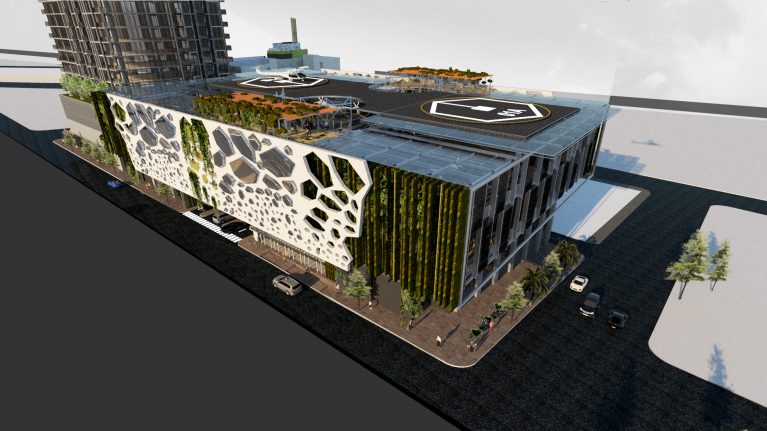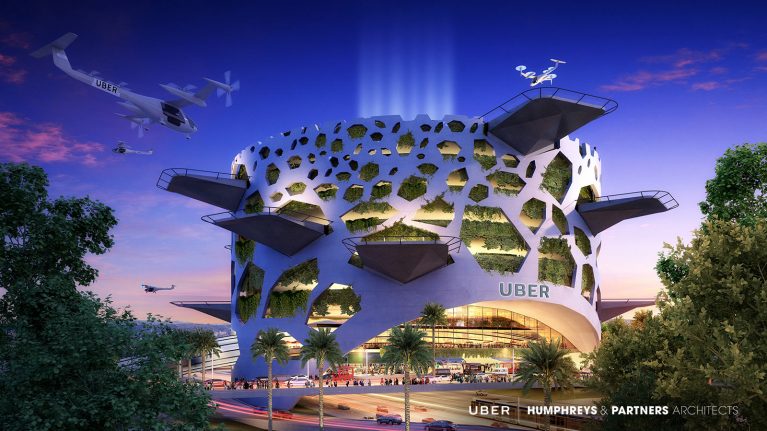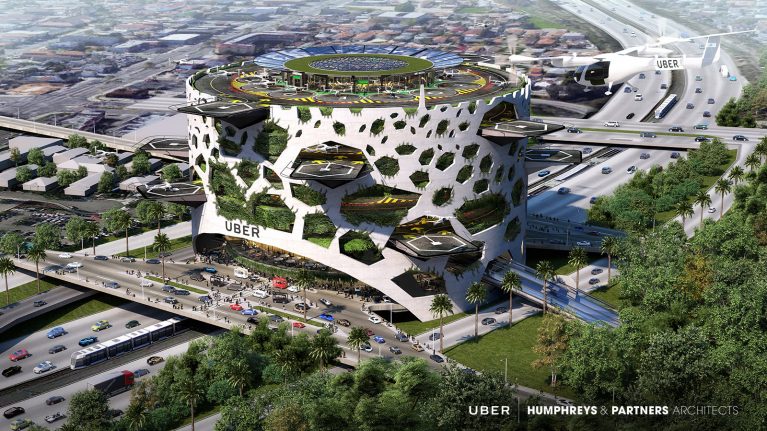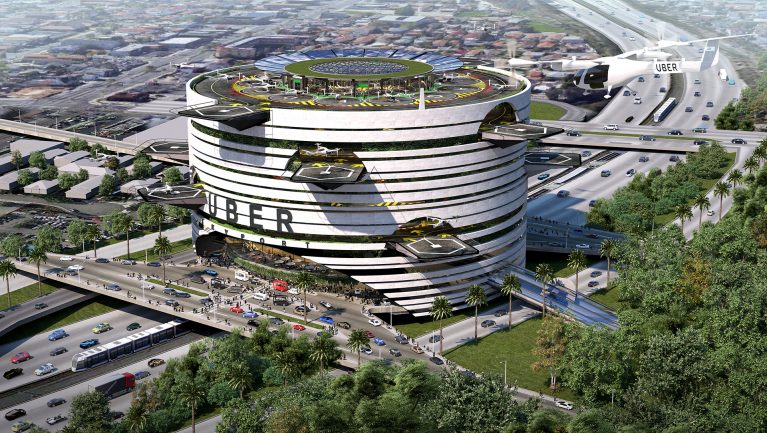Uber Elevate 2018
HPA Reveals Skyport Architecture Design
Humphreys & Partners Architects was invited to present the future of air travel at the second annual Uber Elevate Summit in Los Angeles on May 9th. As a design finalist for Uber Elevate, HPA is pleased to share our innovative ideas and vivid renderings alongside other finalists while providing an aesthetically pleasing and functional solution for congestion through mass adaption, community integration and reduced noise and air pollution.
Our VP of Design Walter Hughes conceptualized two distinctive ports for aircrafts called eVTOLs, or Electric Vertical Take-off and Landing. Each port will be strategically located within Los Angeles and the Dallas-Fort Worth area to provide the maximum air support for a large metropolitan area such as these.
Uber Elevate design requirements consisted of designing a Skyport and/or Mega-Skyport that were modular and scalable to serve from 150 landings per hour to over 1,000, fit within a 3 acre square footprint and the design should absorb/deflect noise away from or blend in with ground below to minimize community disturbance. Humphreys & Partners thrived on the idea of using current infrastructure and created a project that is simple to expand and replicate while tying existing transport solutions to new urban mobility systems.
“When designing the Skyport and Mega-Skyport, it was important to think about concepts that fit present-day technology and existing developments, but can also adapt with shifting trends. Developers constantly ask us about the future of parking garages, as major modes of transportation reduce the need for traditional parking. Uber Elevate offers a viable solution. We focused on a design that can easily be replicated expanded. Add retail, office, and more, and we’ve expanded the meaning of a multi-use space,” said Hughes.
Skyport
The Skyport is a destination port that sits atop the existing parking garage adjacent to a prospective high-rise project, located in West Downtown Los Angeles.
A viable solution to the ever-pressing developer’s question of what to do with existing parking garages and lots, as cars become a less-frequent mode of transportation. These ports are smaller in size and easy to duplicate around a city, creating multiple options for departure and takeoff.
Skyport was designed with a 2-layer skin system. A green wall layer will aid in noise reduction while filtering the air. The second layer, Bio-Concrete will be crafted from mixture of concrete and limestone-producing bacteria. This self-healing material is activated by water and thrives in alkaline conditions to fill and repair cracks and damage, effortlessly tying nature and the built environment. In addition to its self-healing properties the concrete will absorb CO2.
On the drone landing level, there will be 2 landing pads separated by 200 feet and a safety net with PV glass. Generating 150 landings per hour, once the eVOTL has landed it moves to the high speed drone elevator that charges the vehicle while delivering customers to the passenger circulation area. In addition to the Skyport, there will be a ground level drop off and pick up breezeway.
The structure will be crafted from mixture of concrete and limestone-producing bacteria called bio-concrete. This self-healing material is activated by water and thrives in alkaline conditions to fill and repair cracks and damage, effortlessly tying nature and the built environment.
Mega Skyport
This organic, idiosyncratic design is directly inspired by the form of natural beehives. On the façade, screens positioned around the structure merge a natural aesthetic with abstract design that can be matched accordingly to the surrounding area with room for vertical farms, solar panels or advertising. The vertical and cylindrical shape of the structure conserves space, minimizes the materials needed for construction and allows for future expansion.
Mega-Skyport is proposed to sit on top of Highway 105 in Los Angeles, allowing for interaction with multiple modes of transportation. An existing railway runs through the middle, while cars and shuttles can drop off on the first level, with parking underneath the structure. Noise from the highway helps camouflage the additional noise generated from Mega-Skyport.
Poised for continued growth and expansion, Mega-Skyport is a multi-use space and can accommodate office, retail and more. In addition to the mixed-use features, this port is designed to support high activity and functionality from daily commuter traffic to high volume events.
Ensuring safety, none of the landing/departure pads overlap and each take-off and landing surface and zone is within FAA regulations.
Driving home sustainable design, Mega-Skyport will feature transparent glass solar cells which is energy generation for the eVTOLS, solar rope technology within the concrete/paving on the upper level, Bio-Concrete that aids in acoustics and pollution absorption and vegetative green walls that purify the air and also help with sound disbursement.
Specs
- 900 passengers/hour per level
- 5,400 passengers/hour per total Mega-Skyport
- 13 boarding/charging/unboarding pads per level
- 2.9 acres footprint
- 240 parking spaces for cars
- 6 levels
- 2 simultaneous fato per level
- 5 minutes at platform per eVTOL
- 1 landing every 20 seconds
- 180 landings/takeoffs per hour
“Instead of trying to solve the new problems with old forms, we should develop the new forms from the very nature of the new problems.”
-Mies van der Rohe







